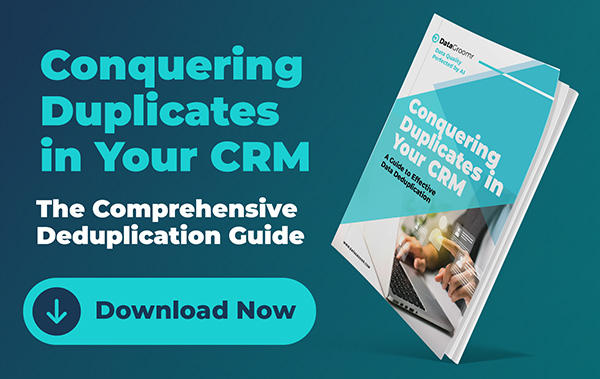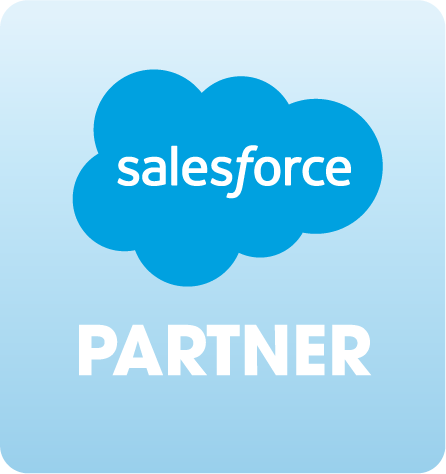
The use of artificial intelligence has turned into a pillar of the contemporary revenue operation. While Salesforce is launching the use of Einstein and GPT-powered capabilities, companies are using AI more and more to provide forecasting, lead scoring and account prioritization. The question that leadership is posing is, “How quickly can we get AI to drive results?” However, when you are going to pursue flashy AI tools, one question that is quite important is, “Is your Salesforce data trustworthy enough to make meaningful decisions by AI?” The truth is unpleasant: AI is not fixing bad data; it is magnifying it.
When your CRM contains duplicates, missing fields, differing formats, or outdated accounts, AI will surely give improper recommendations. False leads, inaccurate predictions, and unintended accounts can result from automated processes. Basically, poor data does not simply continue to exist, but it is more pronounced and costly when fed into AI. It is not only intelligent to make data quality your first AI project but a necessity. Without this, no AI system can be trusted to enhance revenue or results.
Run a Reality Check on Your CRM
Examine your Salesforce data before deploying any AI project. Its accuracy is overestimated in most organizations. Begin by sampling randomly on Accounts, Contacts, and Opportunities. Ask yourself, ”Would I put my trust in this data, were AI to be making decisions on my behalf?” “Is it clear to a machine who this contact is, what stage they are in, or which accounts are high-priority?” When the answer is, “not really,” then you need to get to work.
Data quality problems are usually divided into four categories: duplicates, incomplete records, inconsistent formatting, and stale accounts. Duplicate entries inflate engagement metrics and can cause double-counting in AI scoring.
The lack of information such as revenue, industry or role can render lead scoring and segmentation pointless. Poor formatting–for example, inconsistent state names such as NY, New York, or N.Y.–interferes with automated filters and reporting. Old accounts can mislead AI models, causing them to waste resources on lost or low-value opportunities. This reality check can make executives realize why AI projects fail even before they start.
Standardization Is the Cheapest AI Optimization You’ll Ever Do
Once you understand the condition of your data, it’s time to implement standardization. AI requires structure, but humans naturally introduce variability into the system. Begin by converting free-text fields to picklists. For example, you should not have different variations of the same source in your Lead Source field. Standardize naming rules at all times; make decisions and use them throughout company names, titles and other important fields. Validation rules are essential; they prevent records from being saved when important fields are missingor incorrectlyformatted. One of the key strategic levers for AI is standardization. Think of it as training your CRM to speak a well-defined, consistent language before asking AI to analyze and predict. Without this foundation, even the best predictive models will struggle to identify patterns or deliver relevant insights.
Enrich Your Data for Smarter AI Insights
Clean data alone is usually insufficient. Your CRM might not have the context to make meaningful recommendations even with complete and standardized fields. This is when data enrichment comes in. Enrichment introduces additional firmographics signals such as revenue and company size, technographics such as software used, and behavioral signals such as website traffic or hiring patterns, etc.
These additional dimensions enable AI to recognize trends and offer insights, which internal data alone may not discover. One approach is to use light enrichment to all contacts and accounts, deep enrichment to high-value or ideal customer profile accounts, and behavioral enrichment using engagement data. The enriched data helps AI make better distinctions between accounts, and predicts revenue more effectively, ans focuses on opportunities that have the best chance of conversion. Without proper data enrichment, AI models risk misinterpreting signals or being used inappropriately.

Governance Isn’t Bureaucracy, It’s Revenue Protection
Data cleanup is not a one-time project. Records are in a state of constant decay–with research showing that up to 30 percent of business contact records become outdated every year due to job changes, company transfers, or updated contact details. This makes governance essential. Clear ownership is also important to ensure long-term reliability. An effective governance framework should assign responsibility for field architecture and validation rule oversight;to Salesforce admins or RevOps teams, supported by quarterly reviews to maintain consistency and accuracy.
Lead source consistency and enrichment can be managed by marketing operations on a monthly basis. Where feasible, duplicate management should be automated; otherwise, it can be overseen by sales operations. Dashboards maintained by analytics or revenue operations teams can help visualize data decay and highlight potential risks. With transparency and control over data assets, AI can rely on a stable, trustworthy foundation, allowing the ROI of predictive models and workflow automation to increase.
Design Your CRM With the End in Mind
One of the most common mistakes teams make is tryng to activate all Salesforce’s AI features at once. However, AI is not a one-size-fits-all solution; every application requires specific data patterns and criteria. Predictive lead scoring is based on past history of deal data and activity of engagement. Usage metrics, support interactions, and contract history are needed for churn prediction. Parent-child mapping and clear Ideal Customer Profile (ICP) tagging are key inputs for account prioritization. Even the most intelligent AI tools will not deliver consistent and reliable insights without careful data design.
Starting with one high-impact use case and working backward is a better way to begin. Another effective approach is to identify the data that the model needs to make accurate predictions and then design your CRM accordingly. When your fields, relationships, and validation rules are aligned with defined business results, your CRM evolves from a static database into a strategic asset. AI performs best when built on a platform specifically created to support it rather than layered over a disorganized, ad hoc system.
Automation and AI: Don’t Rush, Build a Foundation First
It’s easy to jump straight into automating workflows, generating predictive scores, and setting AI-driven warning bells. Automation is viewed by many teams as the silver bullet to efficiency, but without a clean and structured CRM, automation may cause more issues than it addresses. To illustrate, automatic follow-ups or automatic, AI-generated opportunity recommendations on unclean data can waste time, distort metrics, and frustrate sales teams. It’s far wiser to first create a strong foundation of clean, enriched, and well-governed data and then add automation. When the CRM is trusted, AI and automation don’t cause chaos; they increase the impact of human decisions.
Measuring Data Quality as a Strategic KPI
Since data is a pillar of AI success, data quality should be a key performance indicator (KPI) for revenue operations teams. Monitoring metrics like percentage of complete records, duplicate rate, compliance with field standards and data decay over time gives the executives a clear view of CRM health. Teams can identify and fix data quality problems before they negatively affect AI models using dashboards and regular data quality reports. By making data quality a measurable goal, organizations transform their CRM from a storage system to a strategic asset, where AI delivers accurate, actionable, and revenue-centered insights.
AI Works to Amplify, Not Replace
Finally, it’s time to shift mindset. AI doesn’t replace human decision-making, but is instead an intelligence multiplier. As long as the underlying data is clean, structured and enriched, AI can speed decision-making, highlight high-value opportunities, and drive revenue growth. But if the data is a mess,AI will undoubtedly multiply errors and lead teams down the wrong path. Leaders need to ask themselves, “Is our data good enough to trust AI?” before asking how fast AI solutions can be deployed. AI is mathematics, and mathematics is only as good as its inputs. By treating CRM data as a strategic asset and focusing on cleansing, standardizing, enriching, controlling, and thoughtful automation, organizations are set to reap the full benefits of AI while minimizing the risks of automation.










